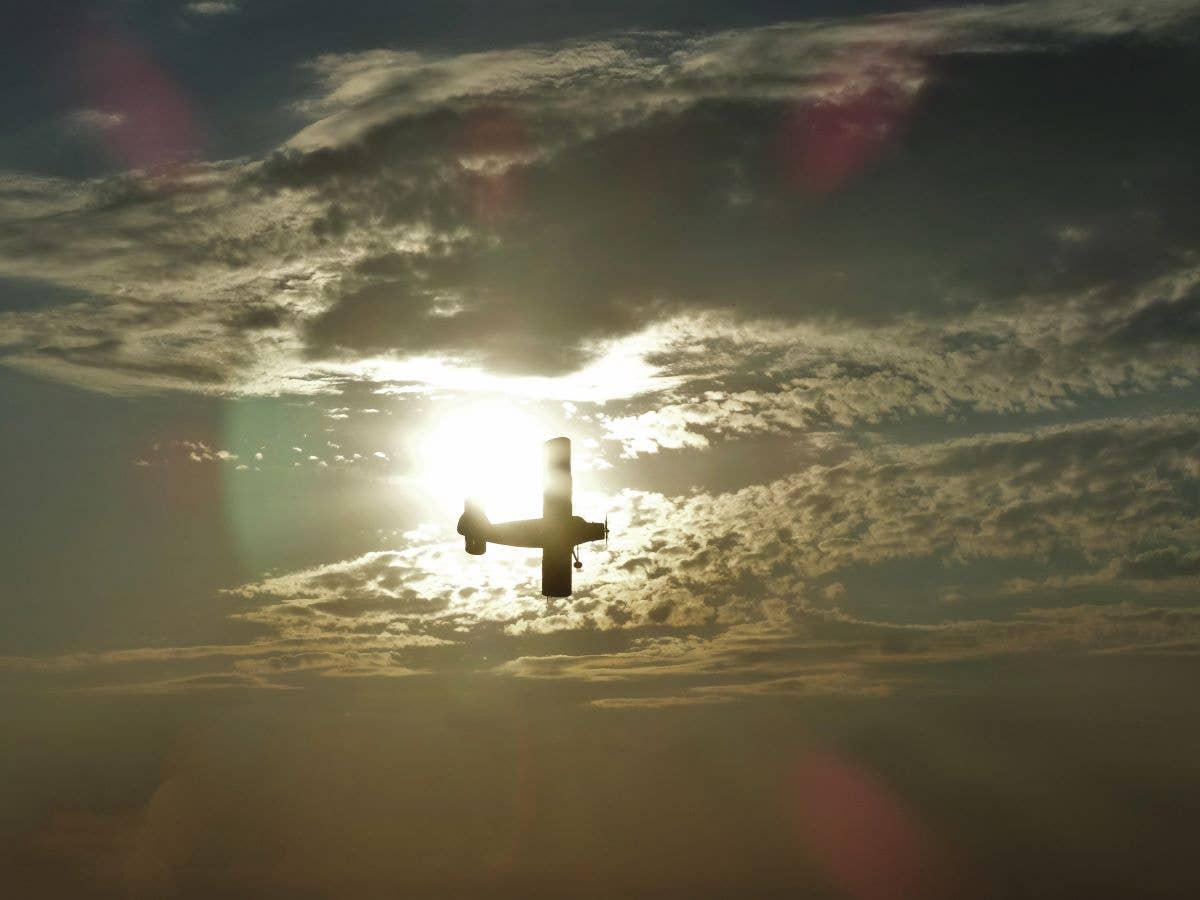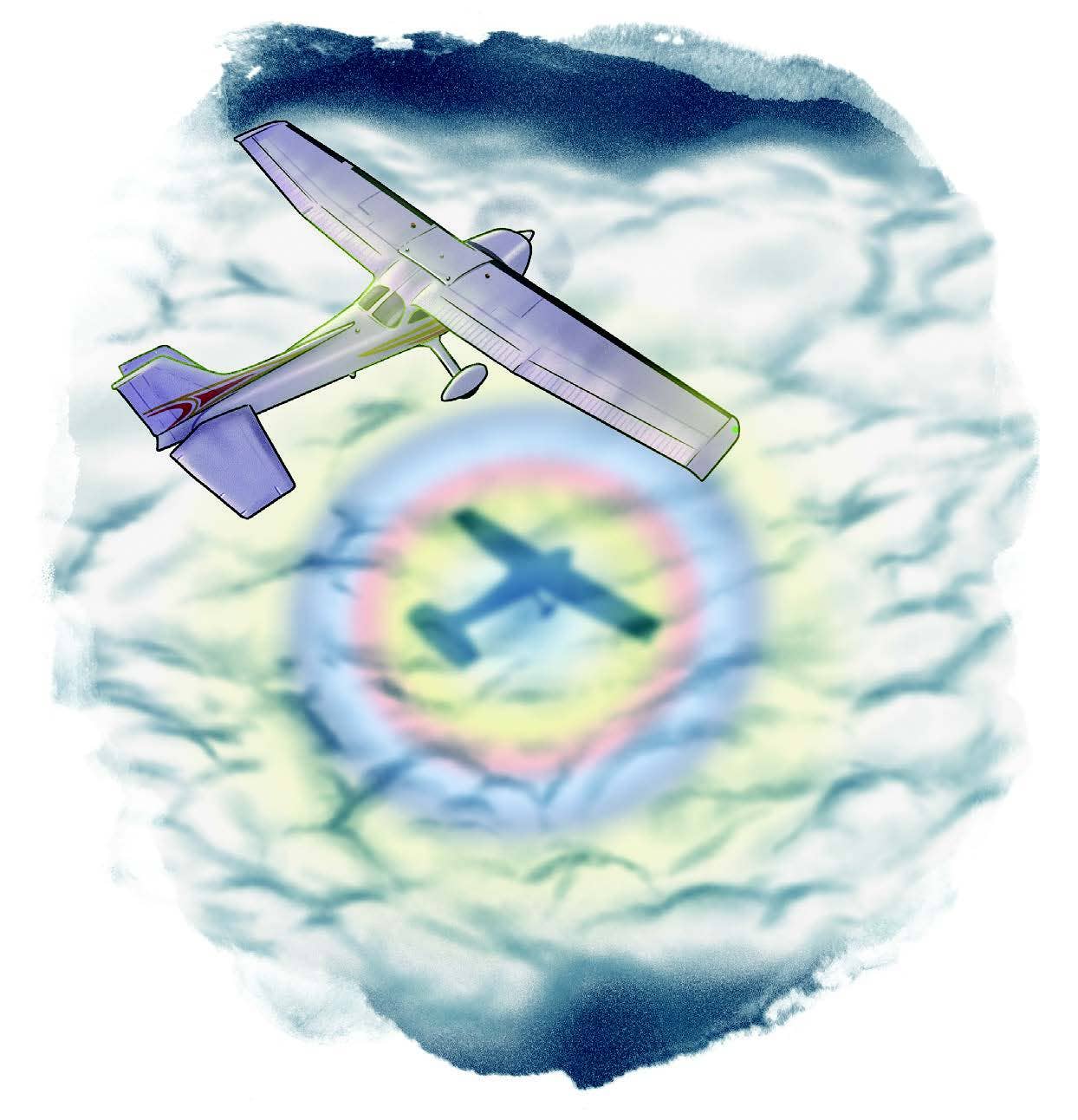Humbled for Life
A thunderstorm encounter changes the way a pilot thinks about instrument flying.

Sometimes ego can get in the way of safety when it comes to responding to unanticipated weather. [Illustration: Joel Kimmel]
It was July 26, 1977, exactly four days after I passed my instrument check ride—one that was performed almost entirely in IMC, but that is another story. I was headed out on my first IFR flight as a rated pilot to see my parents in St. Louis. My flight that day was from the Strongsville, Ohio, airport, now a housing subdivision south of Cleveland Hopkins International Airport (KCLE) to the Spirit of St. Louis Airport (KSUS) in suburban St. Louis.
My ride that day was a brand-new Piper Archer, N2876K. It was well equipped for that era; it even had a two-axis autopilot and DME—a luxury in those days. The flight was planned for four hours plus, with a stop in Indianapolis for fuel and to check weather at the Combs Gates FBO. I filed my first solo instrument flight plan and departed at 8:30 a.m. local. The weather was VFR all the way to Indianapolis International Airport (KIND)with only early morning haze to contend with. After picking up my IFR flight plan from Cleveland Departure, I climbed with the sun at my back into a cloudless blue sky. I felt like I belonged.
If you're not already a subscriber, what are you waiting for? Subscribe today to get the issue as soon as it is released in either Print or Digital formats.
Subscribe NowA quick 2 hours and 15 minutes later, I was taxiing up to Combs Gates with a real sense of accomplishment, maybe even more than four days earlier when I passed my checkride. After all, I was flying in the “system” with no supervision—entirely on my own. However, that was about to change. The next segment between Indianapolis and 50 miles east of St. Louis produced one of those life-altering moments for an aviator, one that shaped every aspect of my future flying career.
As I topped off the tanks and had a sip of Coke, I had a pleasant conversation with a flight service specialist who gave me a standard briefing that included: “VFR along the entire route but with a chance of isolated thunderstorms.” Your typical Midwest summer forecast.
Fair weather cumulus started to form, but nothing in the briefing hinted at a go/no-go decision. In fact, the briefer mentioned the cloud bases reported along the route were at least 7,000 feet. Just for safety, I filed for a westbound altitude of 6,000 feet on Victor 14. I wanted to be on an IFR flight plan—just not hard IFR.
I headed west above the haze and leveled at 6,000 feet. As I approached Terre Haute, Indiana, I saw a confusing solid wall of clouds extending many thousands of feet above my altitude. The clouds didn’t look like cumulus. A quick call to Indianapolis Center confused me even more. The controller said he wasn’t “painting” any weather from my position all the way to St. Louis.
At this point, I considered canceling IFR and landing at Terre Haute. But I scrapped that idea. My ego got in the way. After all, I had just passed my check ride in actual, and I was beaming with confidence. Onward I flew into the cloud bank. The initial ride generated an occasional bump at worst. I felt confident I had made the correct decision to continue. I couldn’t have been more wrong.
Soon I was handed off to Kansas City Center over eastern Illinois. By this time, the Archer was jolted by continuous moderate turbulence. My confidence quickly turned into real concern. I keyed the mike and asked the new controller about the weather in front of me, but he only came back with “light to moderate” precipitation for the next 50 miles. At this point, the airplane was still on autopilot and handling the chop and occasional upset.
Then the situation got worse. Torrential rain, continuous lightning, severe turbulence, and—most upsetting to me—the vertical speed indicator was first pegged up to the stops and then pegged in the opposite direction. I reduced power for an indicated airspeed lower than maneuvering speed (VA), but I knew I was in trouble. I was convinced the wings were going to separate from the airframe. I felt more like a helpless passenger than PIC.
I called Kansas City Center again, but this time I confessed my unfortunate position. I was on the verge of tears. There was little or no controlling my altitude. The updrafts and downdrafts were so strong I knew any attempt to maintain altitude would cause a break up.
- READ MORE: Racing a Storm Is Not the Best Choice
I needed help, quickly. The controller sensed the urgency in my transmission and calmly said, “Stand by.” A few moments later, the controller handed me off to a new one. I was to be his only customer, and he volunteered that he was only “painting” light to moderate precipitation, but I told him the airplane was in severe updrafts and downdrafts. He said to keep the wings level, and he would try to steer me clear of the heaviest precipitation.
Time stood still. I have no recollection of how long he vectored me. He kept saying not to worry about altitude and just try to keep the wings level. The controller continued to “suggest” headings followed by “How’s the ride now?” I wasn’t reassured, but I did robotically turn as suggested, all the time going up and down the elevator. I was soaked through with perspiration and exhausted.
This went on until just south of Litchfield, Illinois, when he cleared me down to the minimum en route altitude (MEA), and I broke out of the cloud bases. Now I had a fighting chance of surviving. There was lightning in all quadrants and sheets of virga I had to dodge, but that was manageable. While the updrafts and downdrafts had subsided, there still was continuous moderate-to-severe turbulence. My head hit the side of the airframe, the headliner, and the glareshield. And without warning, just as I was handed to St. Louis Approach, the airplane broke out into CAVU VFR.
I landed at Spirit of St Louis Airport with the aircraft in one piece—but I was scarred for life. I had been sure I was going to die and would be just another low-time pilot who flew into a thunderstorm. I was so grateful the controller had helped me through, but I knew I would never look at instrument flying the same way. Thousands of hours later, I am still haunted by that flight.
This article first appeared in the July 2023/Issue 939 print edition of FLYING.

Subscribe to Our Newsletter
Get the latest FLYING stories delivered directly to your inbox







